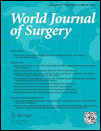The Impact of Involved Resection Margin on Recurrence and Survival After Pancreaticoduodenectomy for Periampullary Carcinoma, with Emphasis on Pancreatic Head Carcinoma
Supplementary Information: The online version contains supplementary material available at https://doi.org/10.1007/s00268-022-06816-2.
Copyright comment: Springer Nature or its licensor (e.g. a society or other partner) holds exclusive rights to this article under a publishing agreement with the author(s) or other rightsholder(s); author self-archiving of the accepted manuscript version of this article is solely governed by the terms of such publishing agreement and applicable law.
Abstract
Background
The supposed adverse effect of involved resection margin during pancreaticoduodenectomy (PD) for periampullary carcinoma or pancreatic head carcinoma (CaP) on long-term oncological outcomes is still inconclusive.
Methods
This is a retrospective study on periampullary carcinoma undergoing PD. Patients with R0 (margin clear) resection were compared to patients with R1 (microscopically directly involved margin) resection. Patients with gross involved margin (R2 resection) were excluded. Long-term oncological outcomes measured included incidence and site of recurrent disease, overall survival (OS) and disease-free survival (DFS). A subgroup analysis was made on patients with CaP.
Results
Between January 2003 and December 2019, 203 PD were identified for present study. The incidence of R1 resection was common (12% in periampullary carcinoma and 20% in CaP). In periampullary carcinoma, R1 resection had greater proportion of CaP, lesser proportion of carcinoma of ampulla (CaA), more perineural invasion, more lymph node (LN) metastasis. R1 group had a shorter OS and DFS, but no difference in the incidence and site of recurrent disease. In the subgroup of CaP (91 patients), R1 group did not differ from R0 group except for more LN metastasis. There was no difference in incidence and site of recurrent disease, OS and DFS. On multivariable analysis, R1 resection was not an independent factor for OS and DFS for periampullary carcinoma or for CaP only.
Conclusion
Involved resection margin was not uncommon. It was not associated with higher incidence of recurrent disease including local recurrence, and was not an independent prognosticator for OS and DFS.




